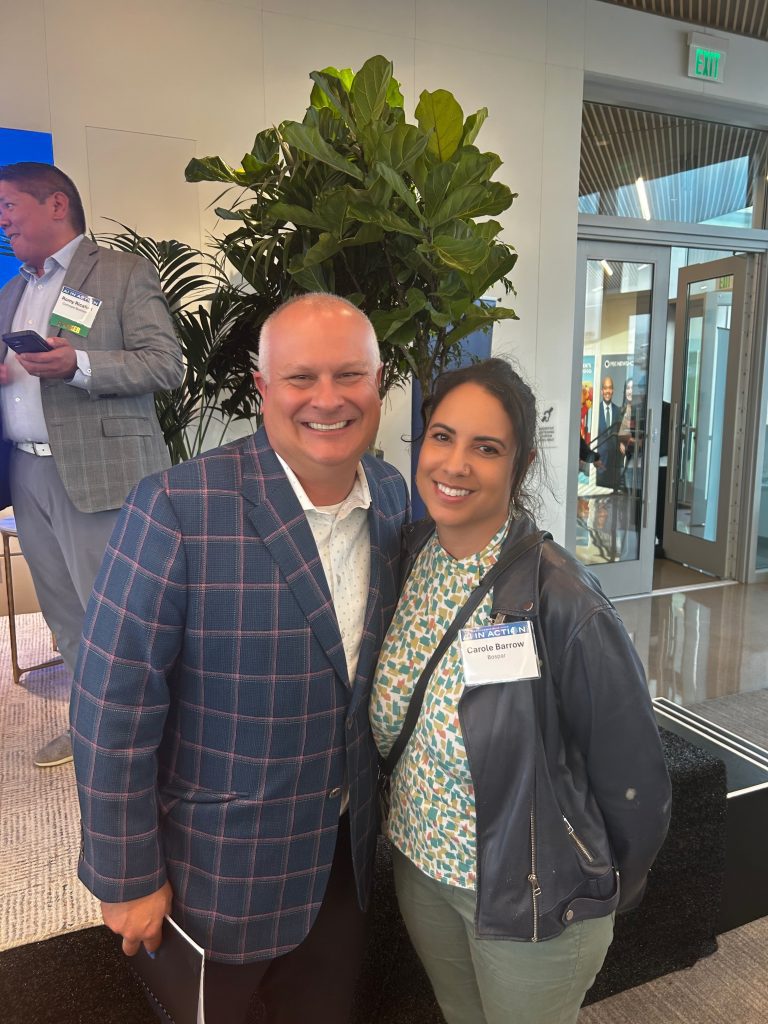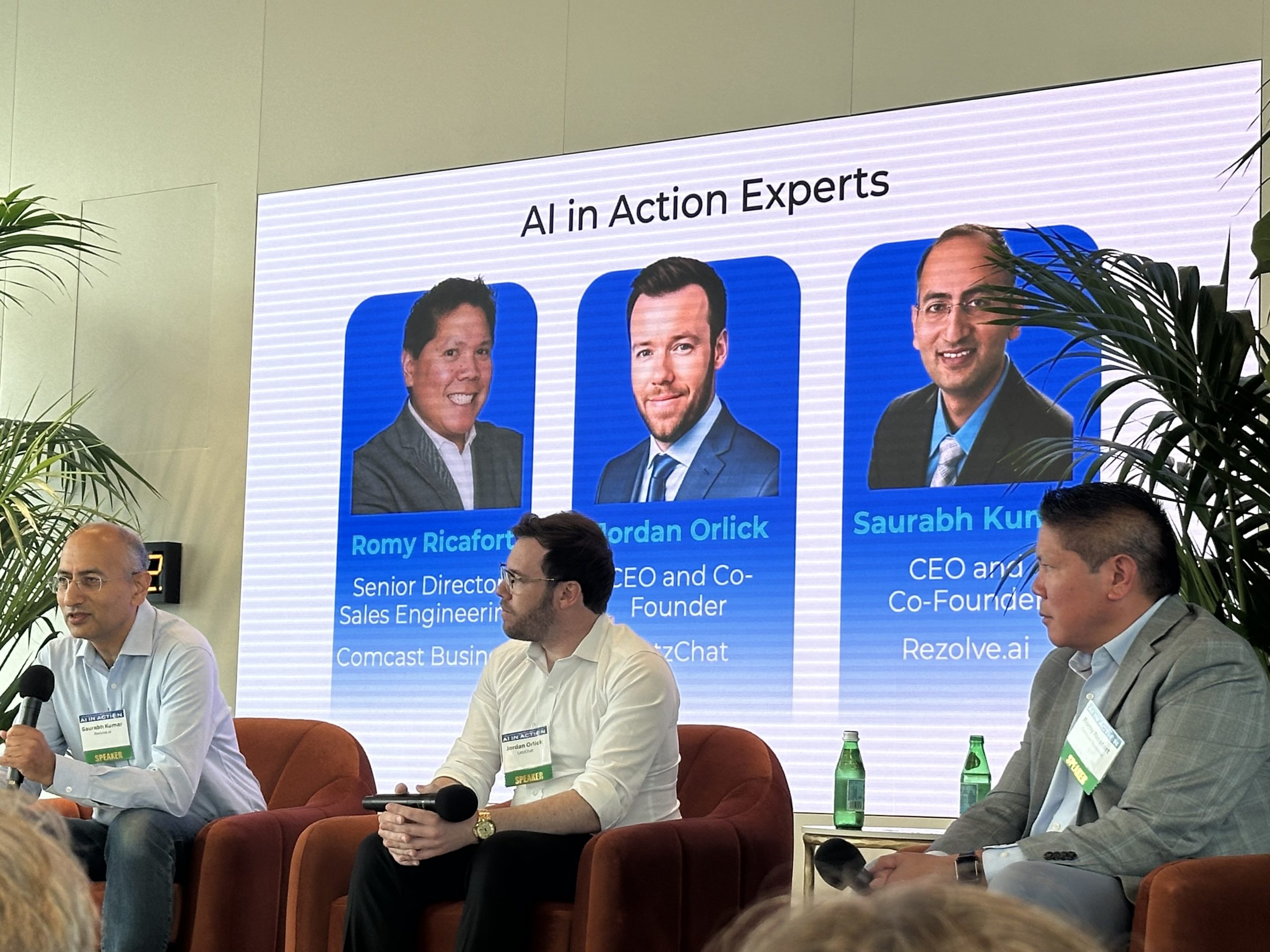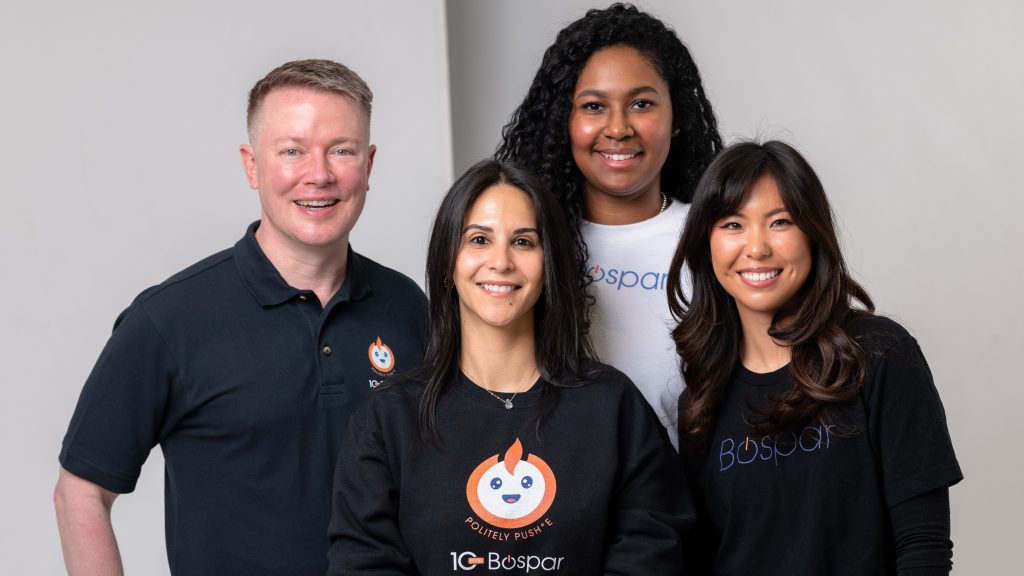AI can be brilliant. It can also be boring. It depends entirely on how we use it; and more importantly, how we talk about it.
That was the real insight from the San Francisco Business Times’ recent AI in Action panel. While the conversation technically focused on how AI is shaping everything from cybersecurity to customer support, the subtext was this: companies are no longer being judged by whether they use AI, but by how thoughtfully they engage with it.

Moderated by Pete Casillas, Bay Area Market President and Publisher at San Francisco Business Times, the panel brought together Saurabh Kumar (CEO and Co-Founder of Rezolve.ai), Jordan Orlick (CEO of LetzChat), and Romy Ricafort (Senior Director of Sales Engineering at Comcast Business). Their experiences were different, but their advice echoed a common theme: AI is a conversation, not a shortcut.
Ricafort may have delivered the most tweetable takeaway of the afternoon: don’t treat AI like Google. Treat it like an advisor. In other words, stop assuming you’ll get great answers by default. The best results come when you ask smarter questions, iterate, and aren’t afraid to challenge what the model gives you.
That’s a metaphor not just for AI use, but for PR itself.
Great storytelling happens when you dig deeper, not when you take the first draft at face value. This is true whether you’re writing a press release, drafting a press statement, or deciding what important information deserves emphasis.
The panel also veered into territory that should get every communications leader’s attention. Kumar outlined how generative AI is now being used in increasingly sophisticated scams; from deepfake CFOs to voice-cloned family members.
These aren’t fringe cases. They’re reminders that your brand’s identity is now part of the cybersecurity conversation, and that crisis comms planning — and even your next news release — must evolve accordingly.
Orlick added perspective from the startup side, explaining how AI is helping smaller companies punch above their weight; automating support, scaling international reach, and accelerating sales. But he also noted the responsibility that comes with that leverage.

It’s easy to deploy AI. It’s harder to explain why you chose one approach over another and how you’re keeping customers informed along the way. That tension is exactly where PR needs to step in, ensuring accurate information is consistently delivered across media channels, media outlets, and other media sources.
Throughout the discussion, ethics and transparency were front and center. From model disclosure to prompt design, the panelists stressed the importance of building in accountability at every layer. That’s not just good governance. It’s what stakeholders now expect. Reporters, investors, and customers want to know that your AI stack includes both innovation and intention.

Which brings us to the big takeaway for comms pros: flashy claims aren’t enough anymore. “AI-powered” won’t land you media coverage. Credibility will. The companies earning real attention are the ones showing their work, surfacing their data, and being honest about the trade-offs. That’s also where good marketing strategies come in — combining storytelling with transparency and measuring public opinion to understand how messages land.
At Bospar, this is where we live. We’ve guided AI clients through funding rounds, product launch announcements, regulatory hurdles, and the occasional fire drill. What we’ve learned is that AI is only as compelling as the story you build around it; and that story needs to be rooted in clarity, not just capability.
If you’re building with AI, your next big leap might not be a feature. It might be a better narrative.
Ready to tell your AI story? Let’s talk.




